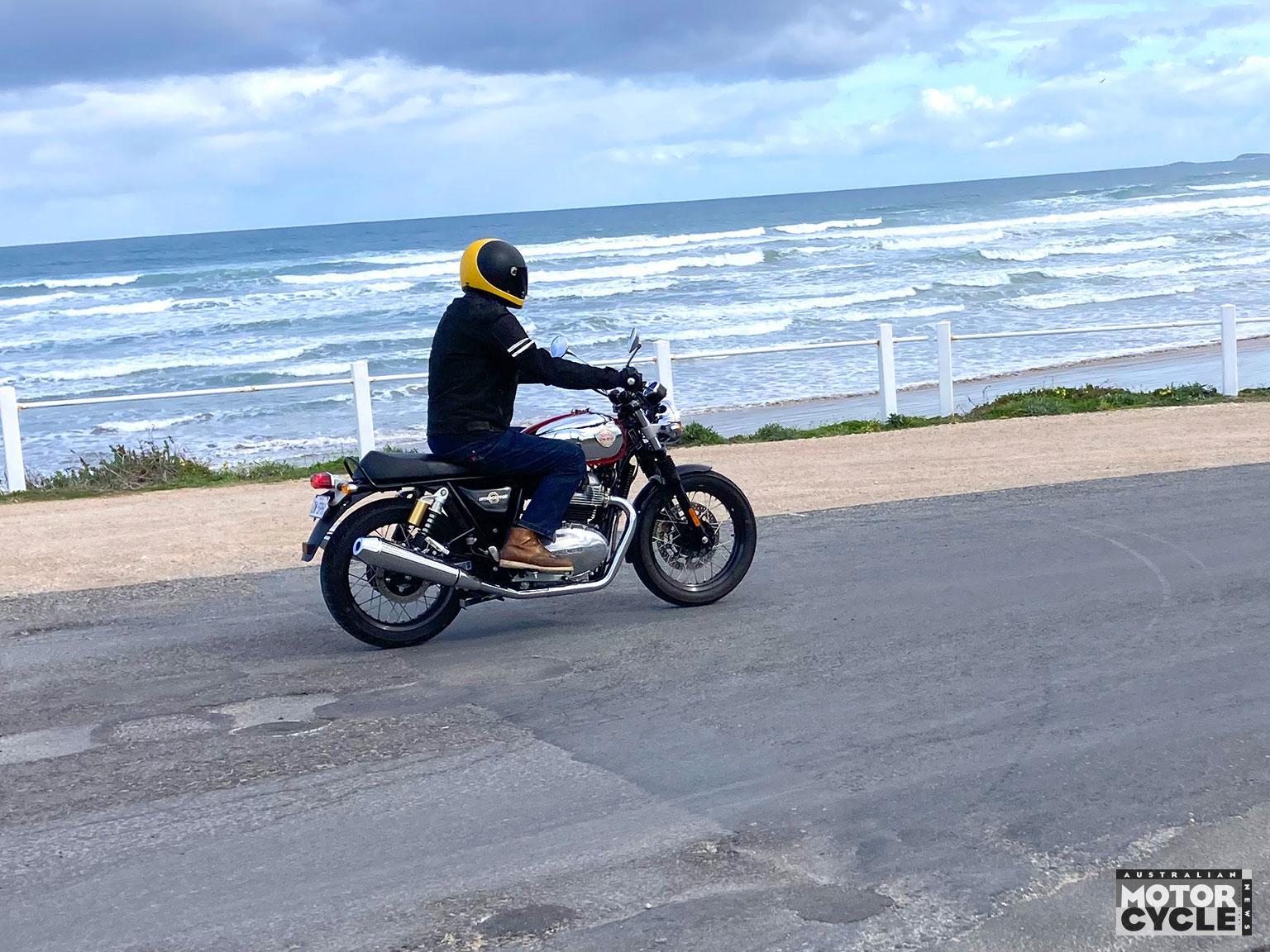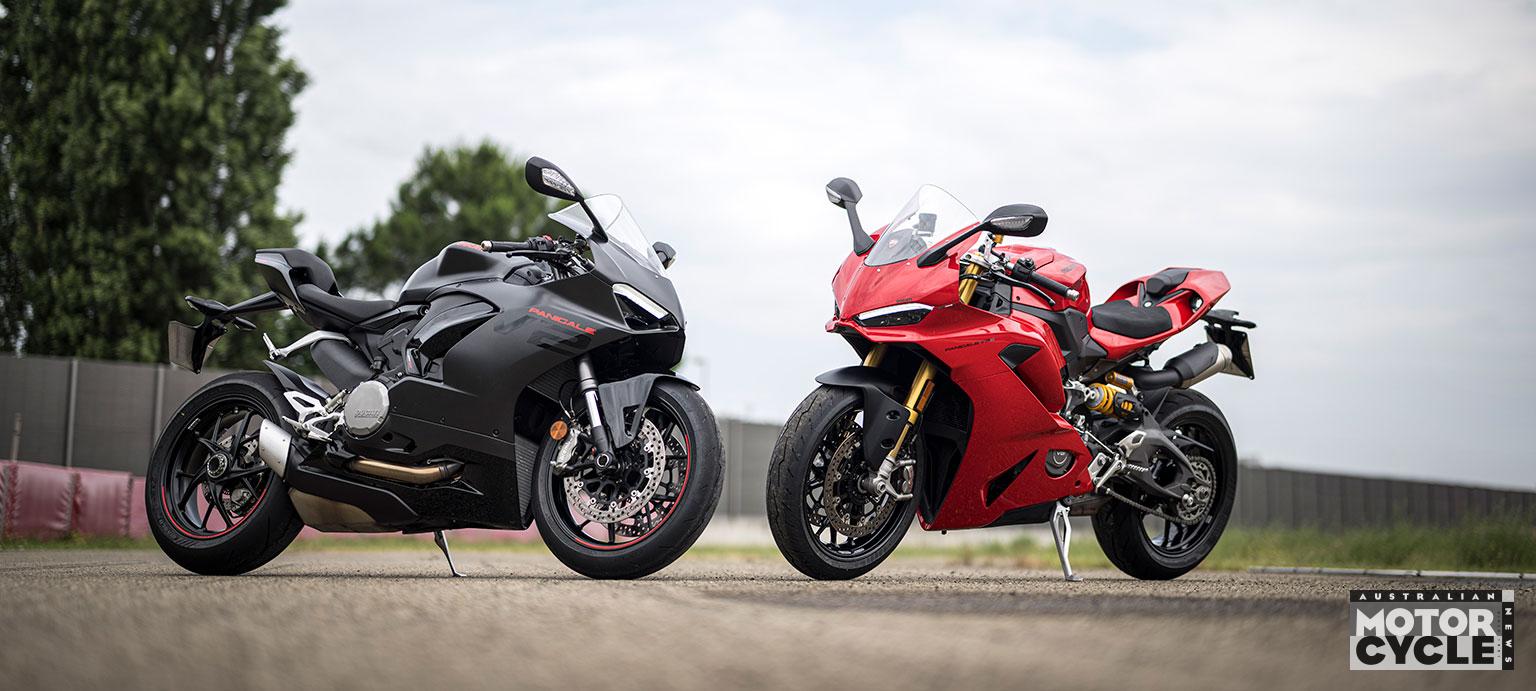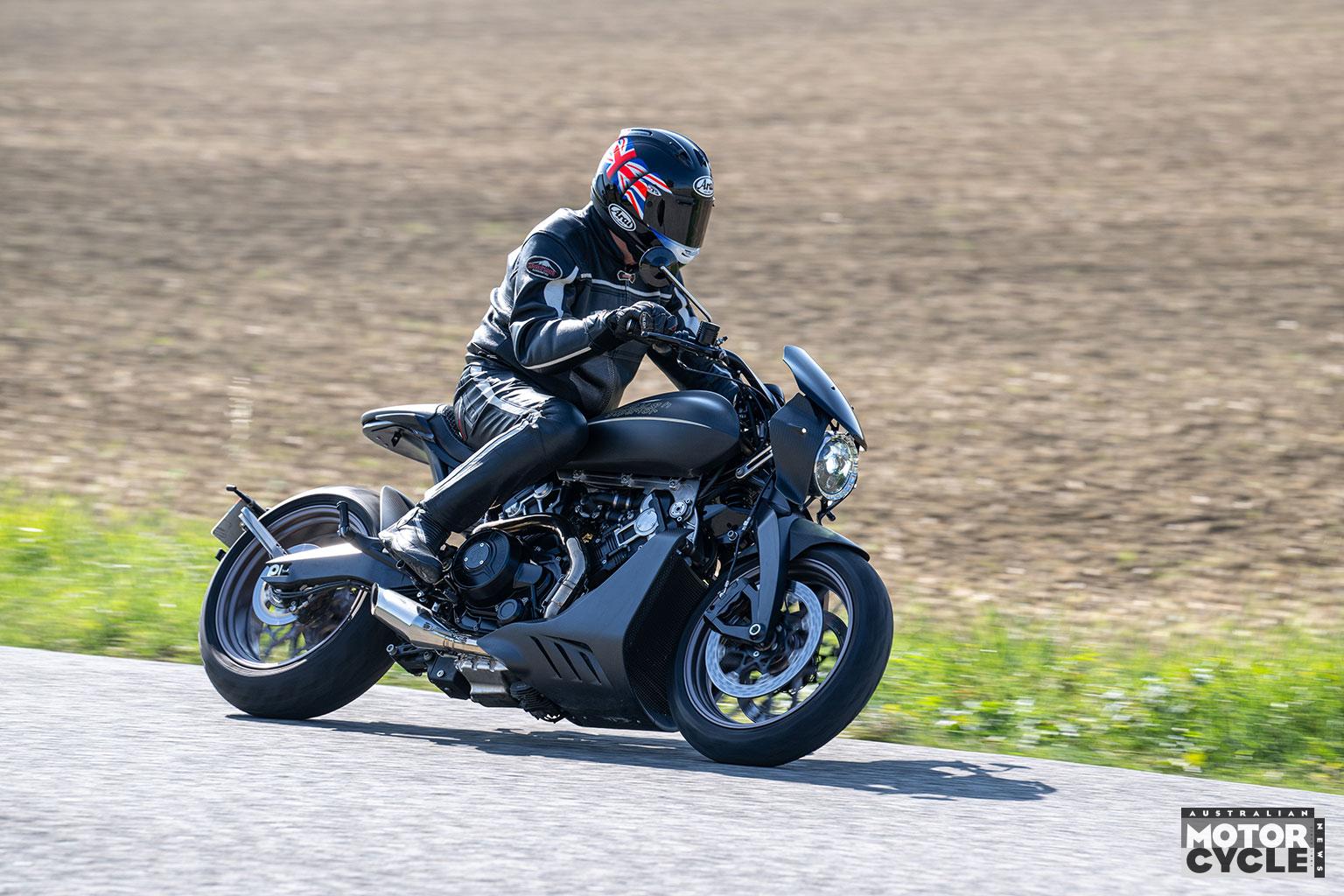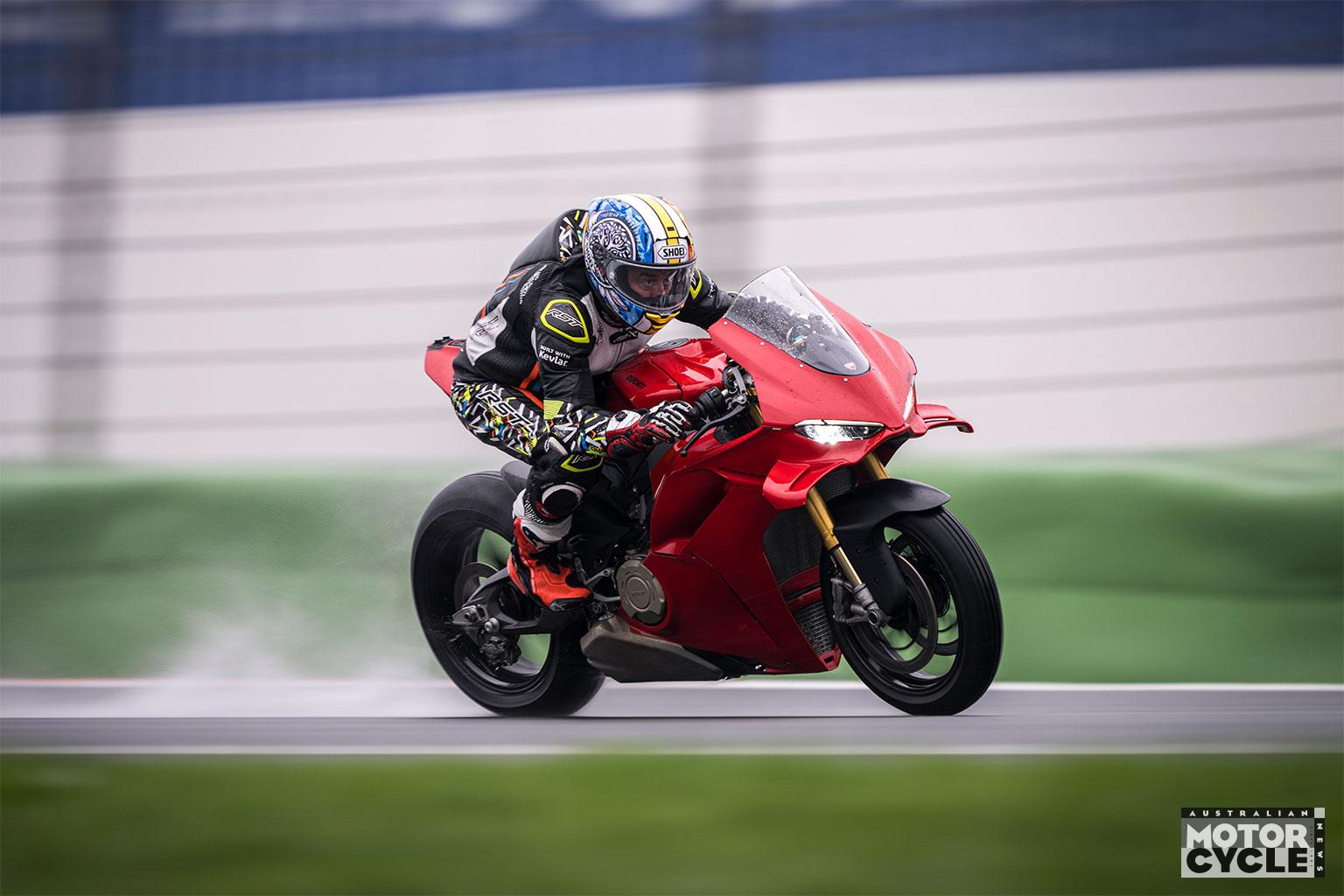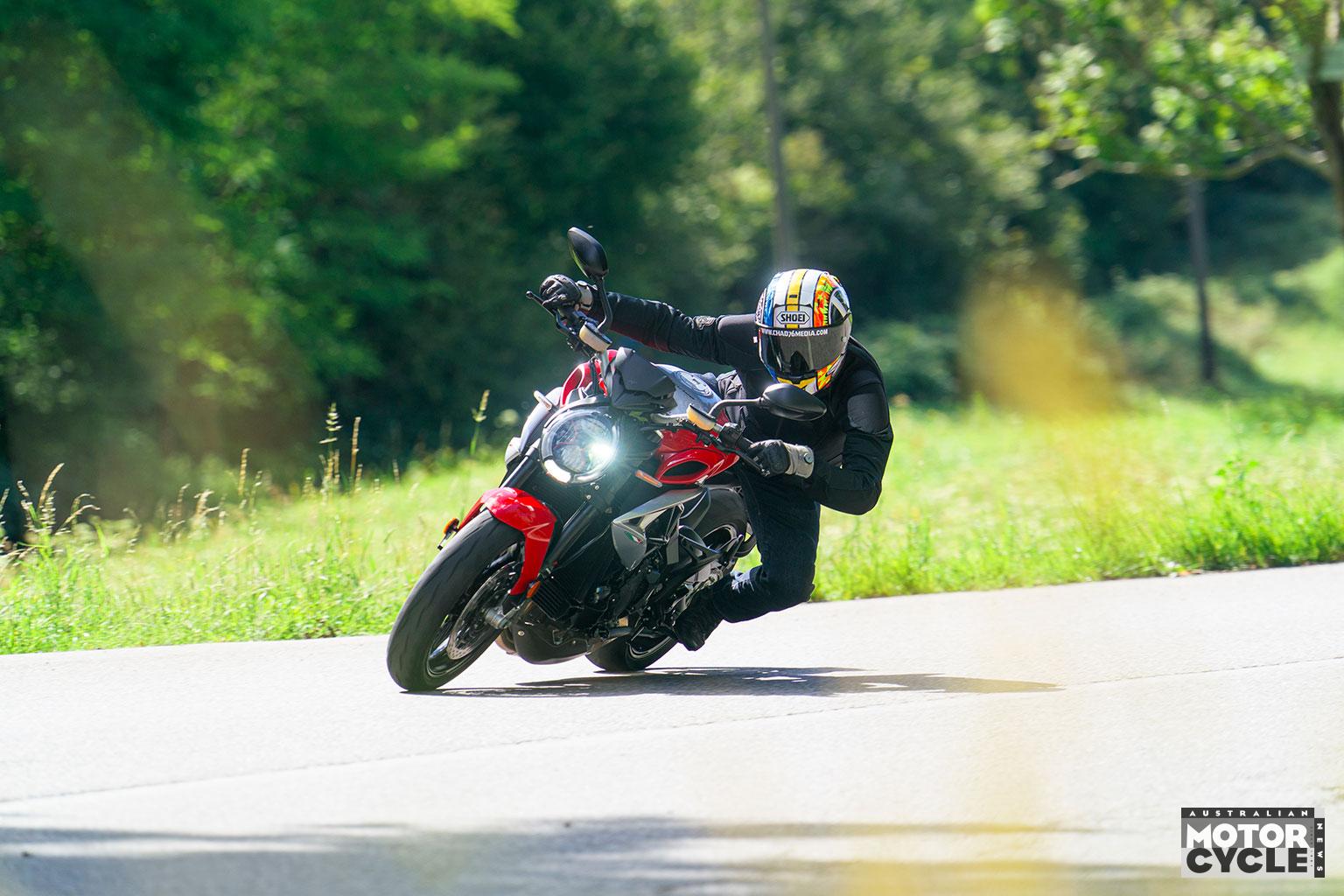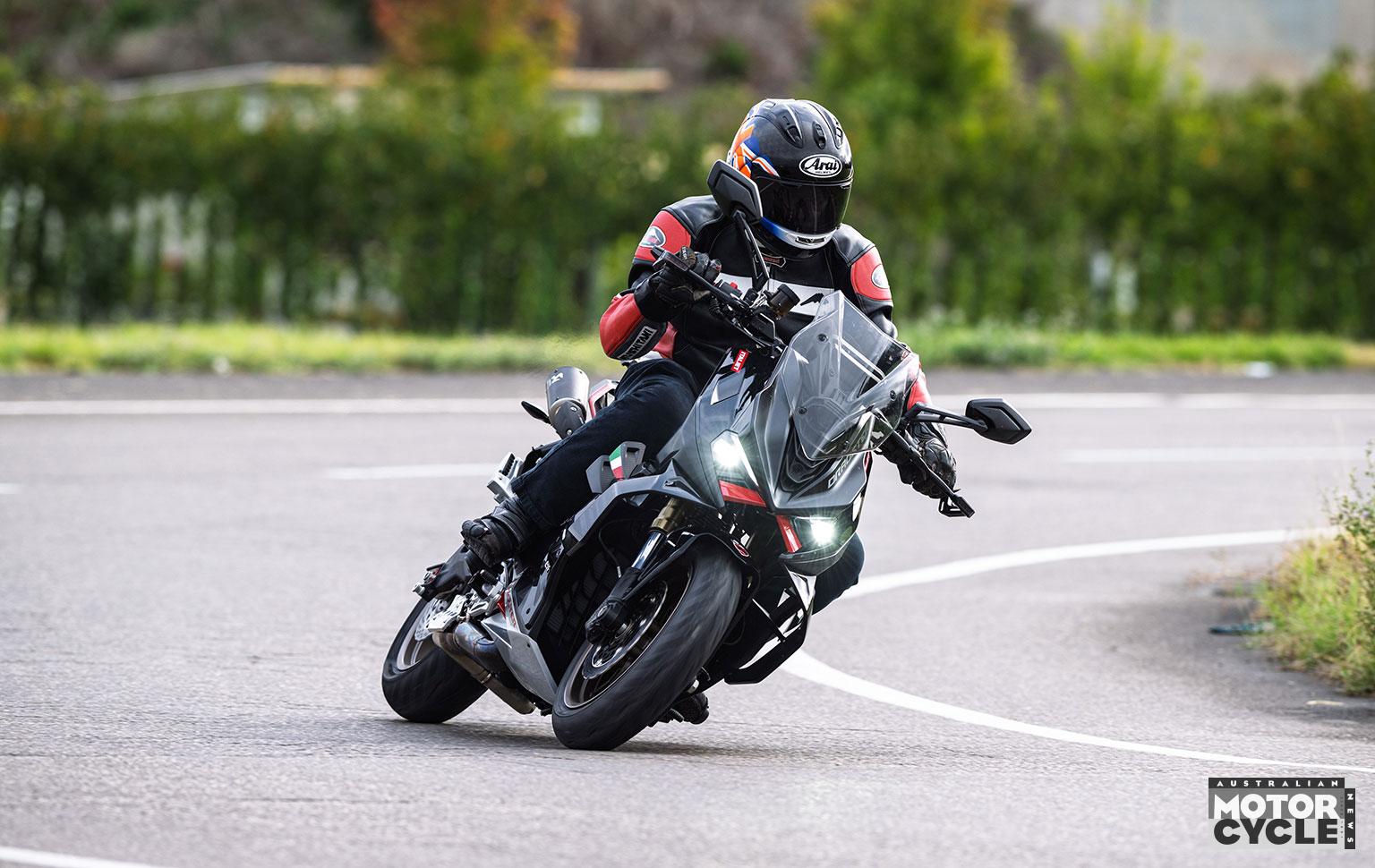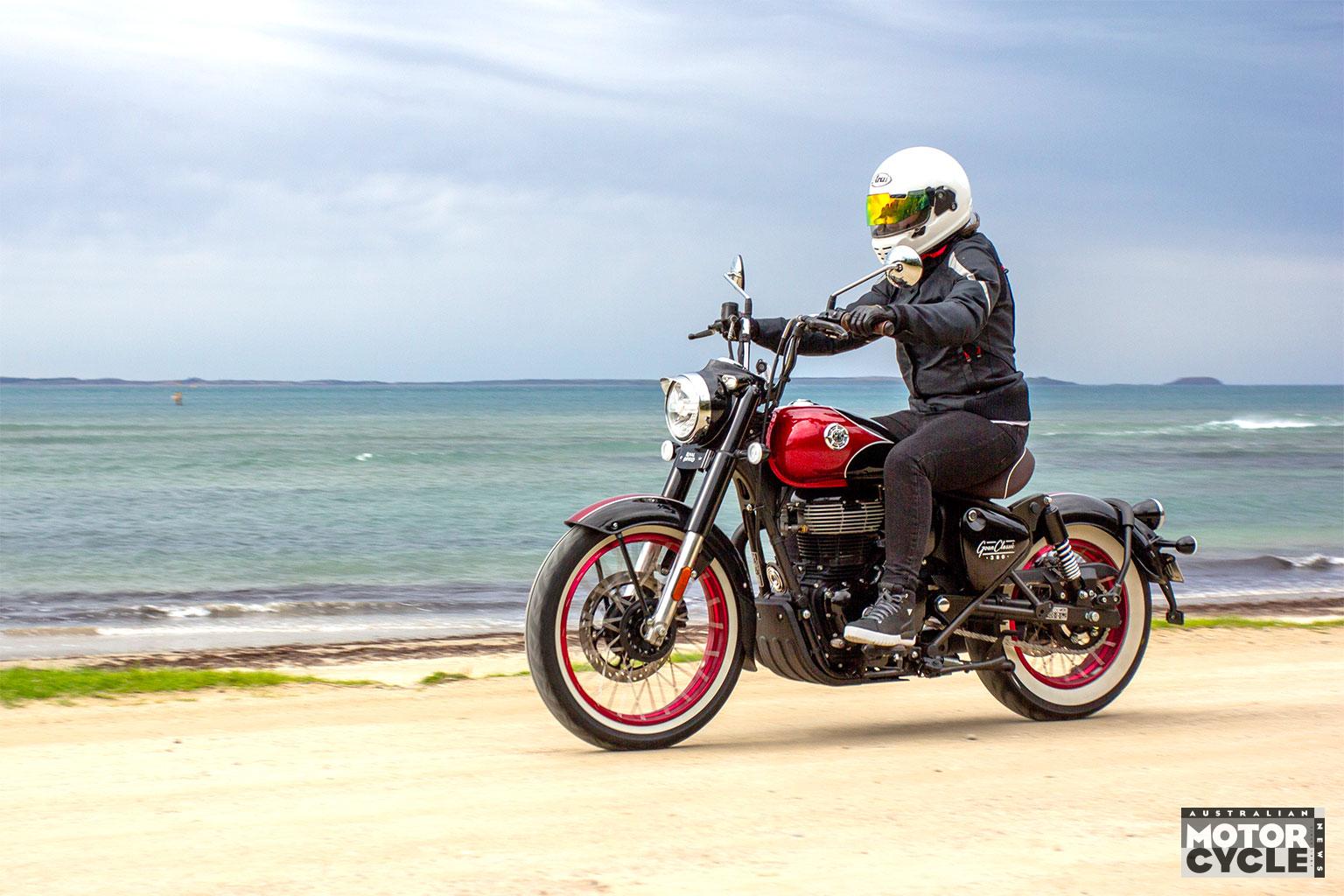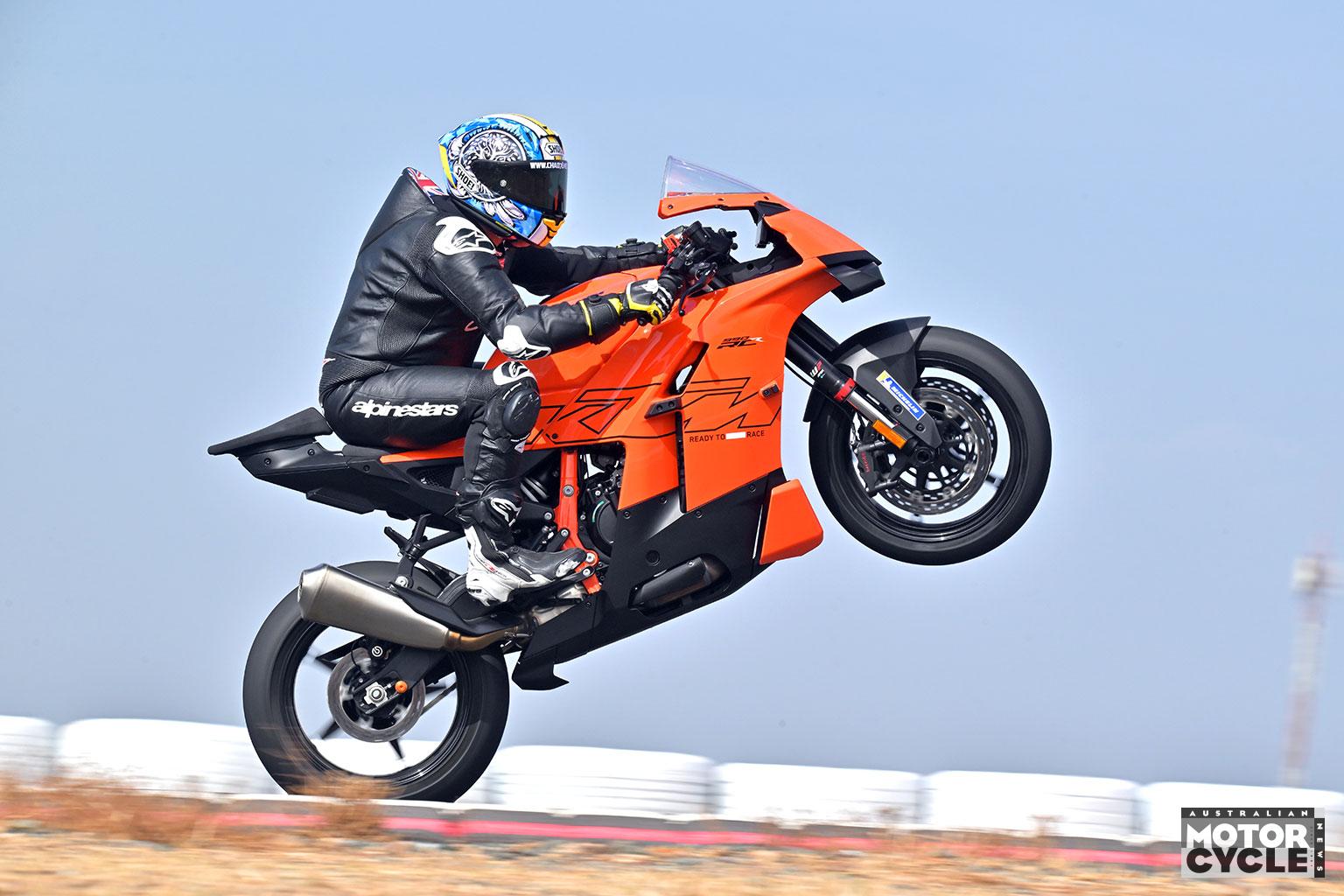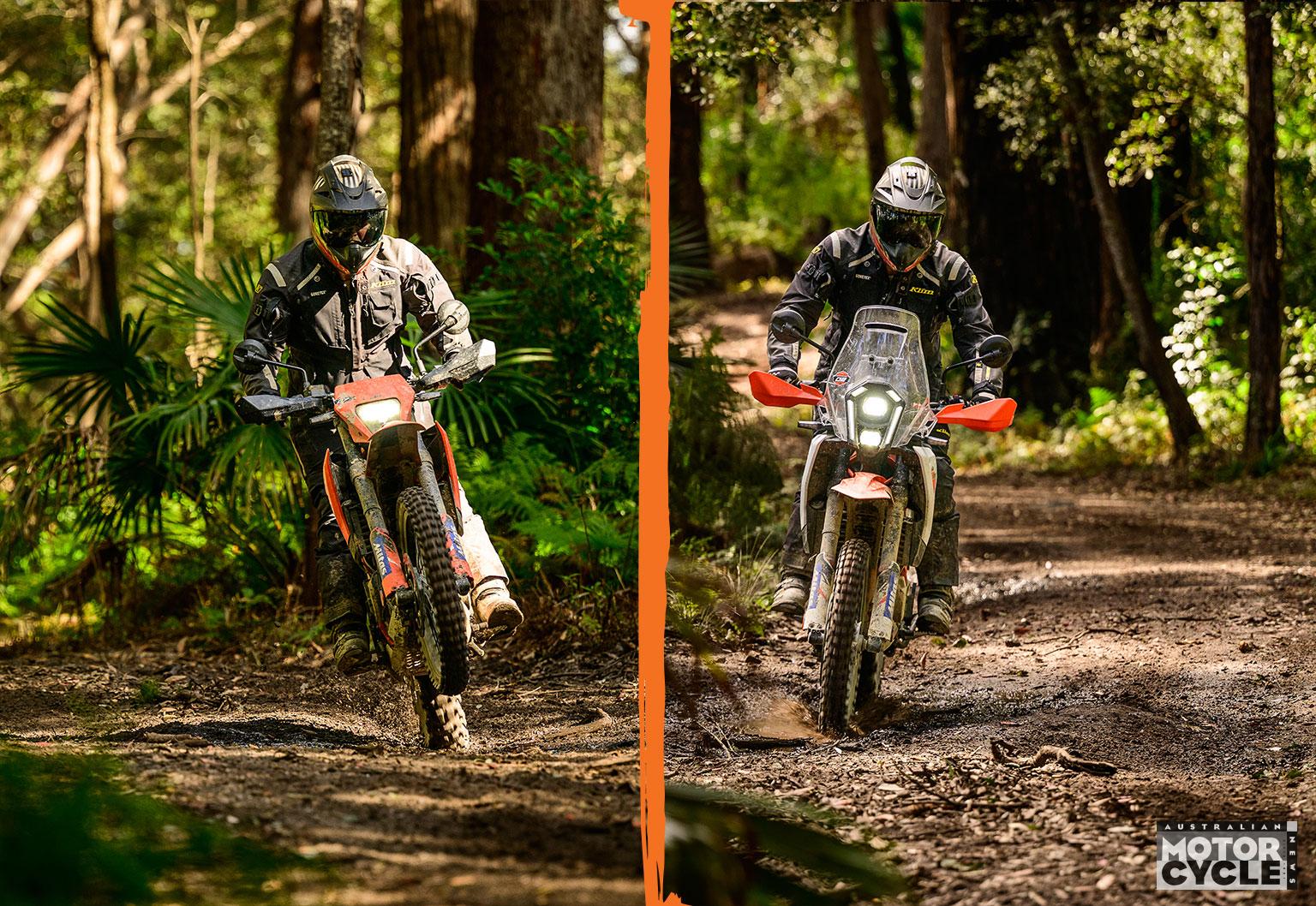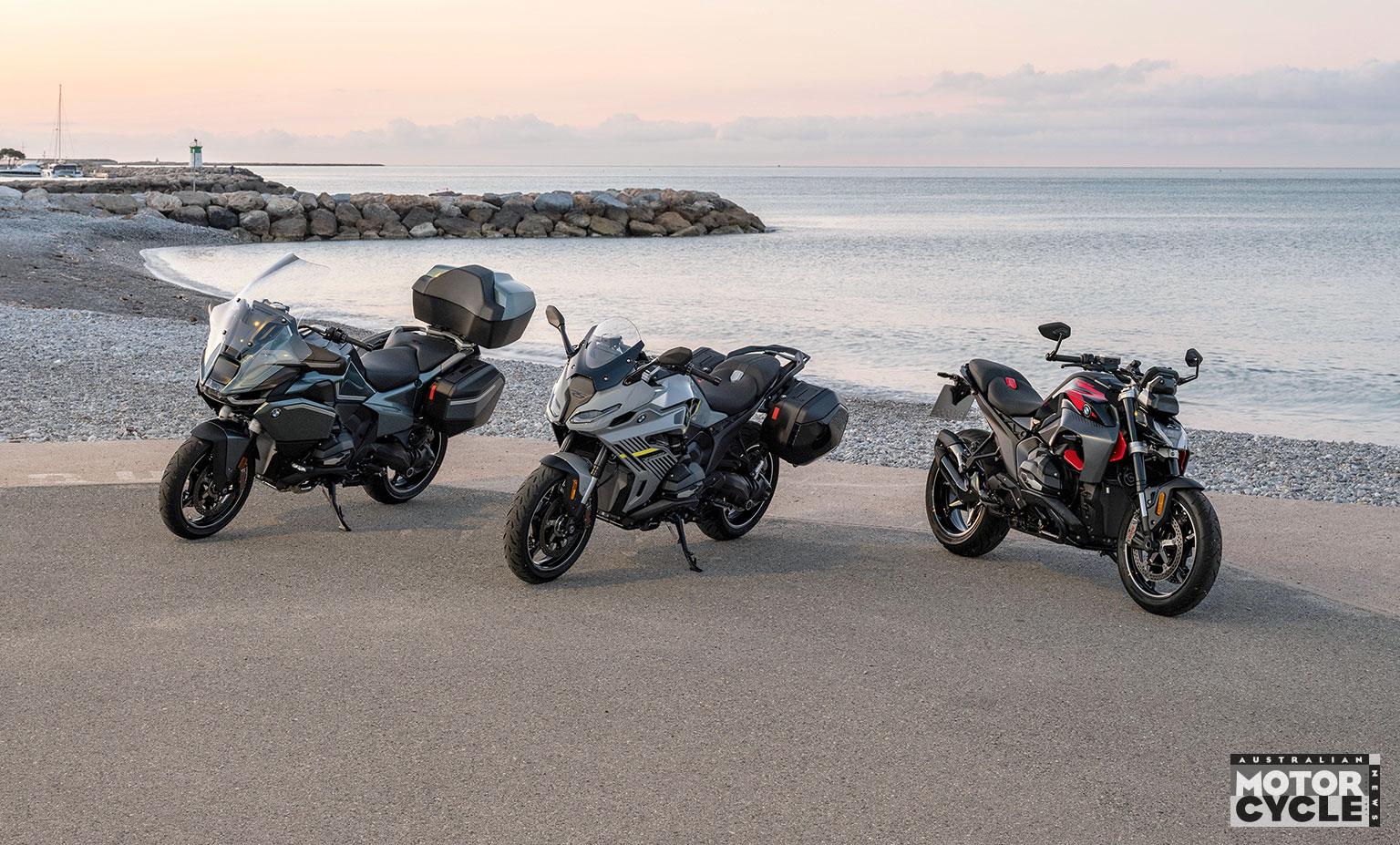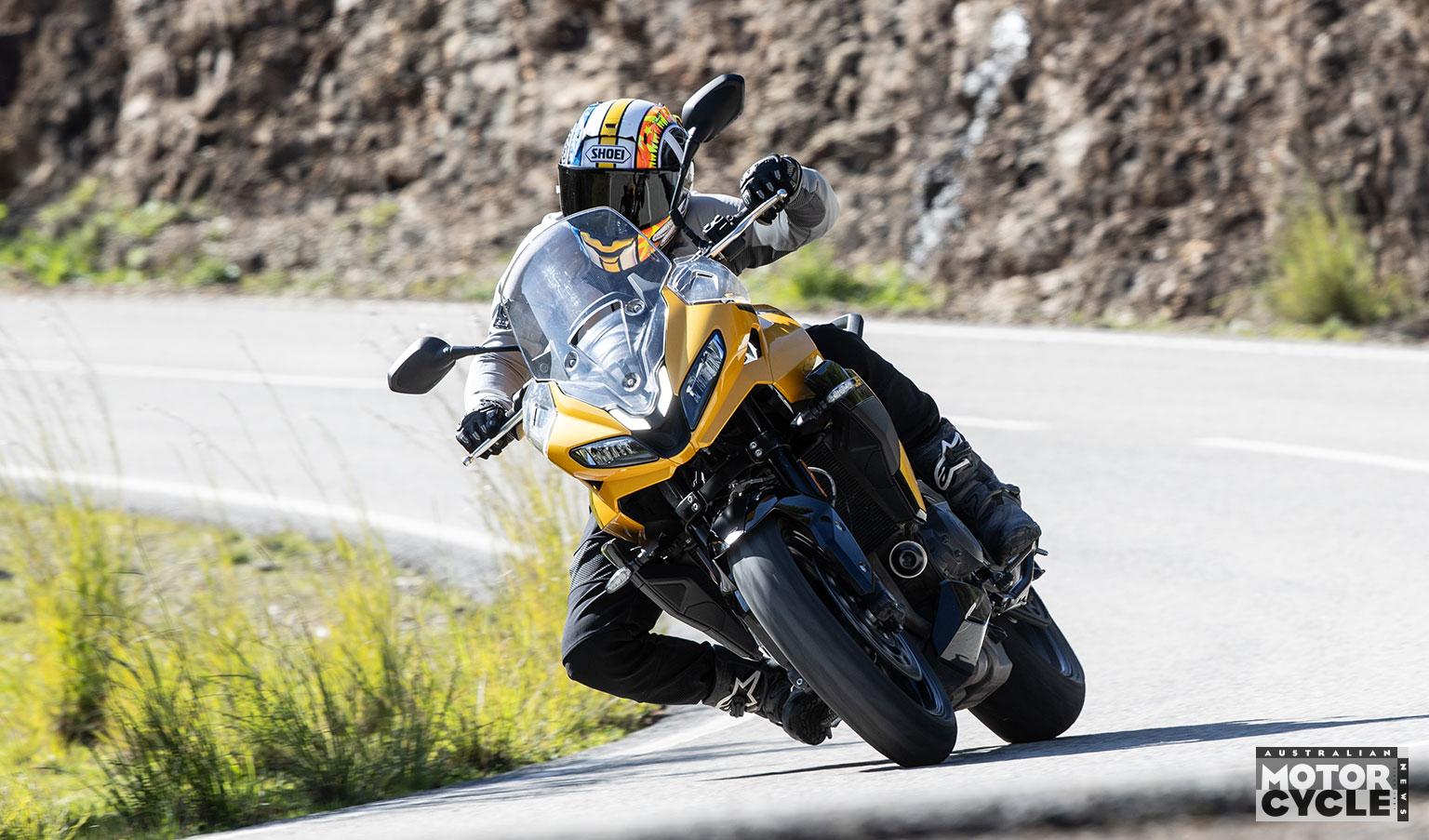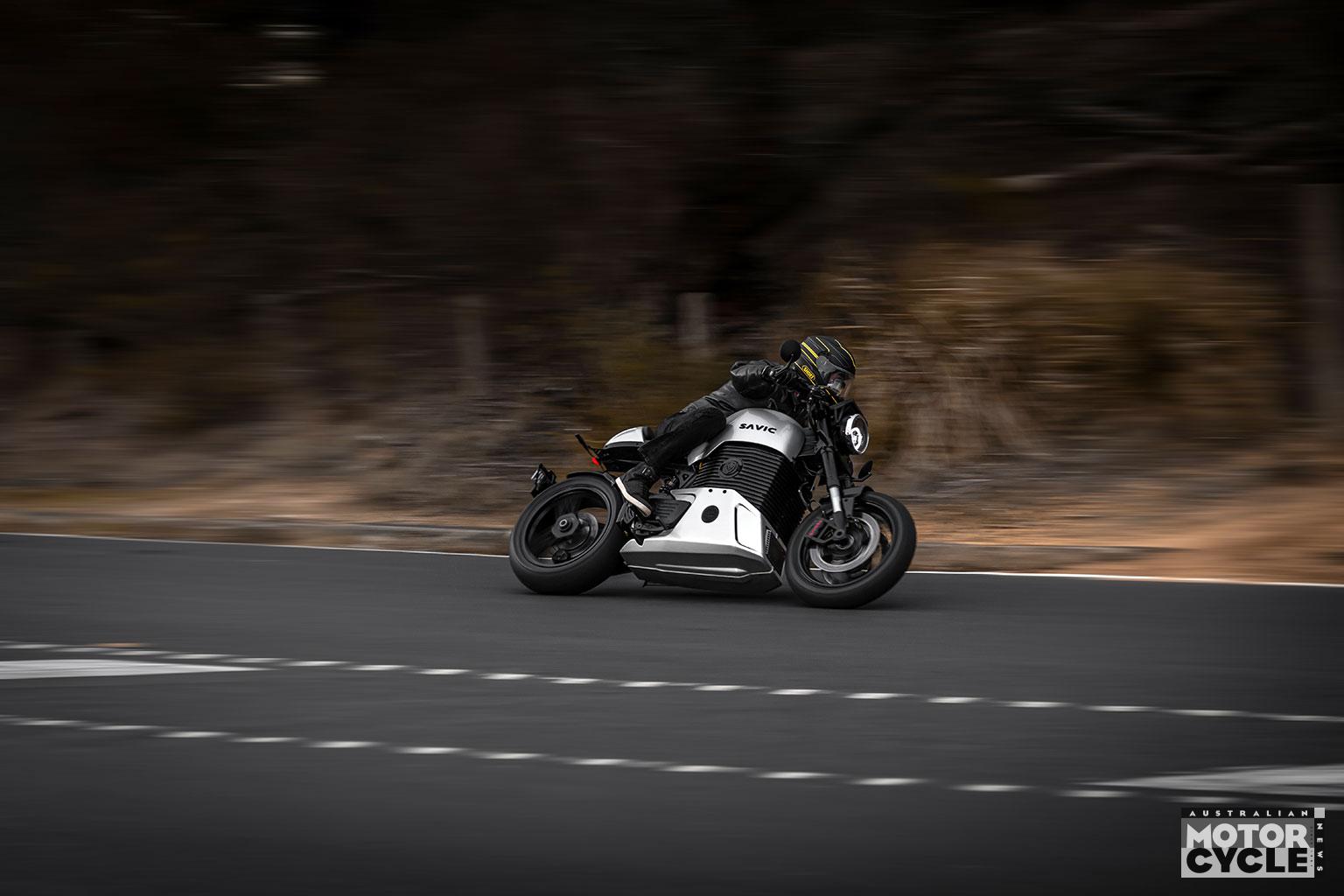Using all the know-how gained in its recent domination on racetracks around the world, Ducati has unveiled its most potent Panigale yet
The current and now outgoing Panigale V4 S is the poster bike of this decade’s sportsbike lovers – just as the famous Ducati 916 was for so many of us in the 1990s. It is arguably the most desirable superbike on the market. In comparative group tests around the world it more times than not comes out on top. You could forgive Ducati for letting its highly skilled Ducati Corse engineers have some time off. But no, not Ducati, who pushed on regardless and now are presenting us with another breathtaking 158.9kW (216hp) road-going superbike gamechanger.
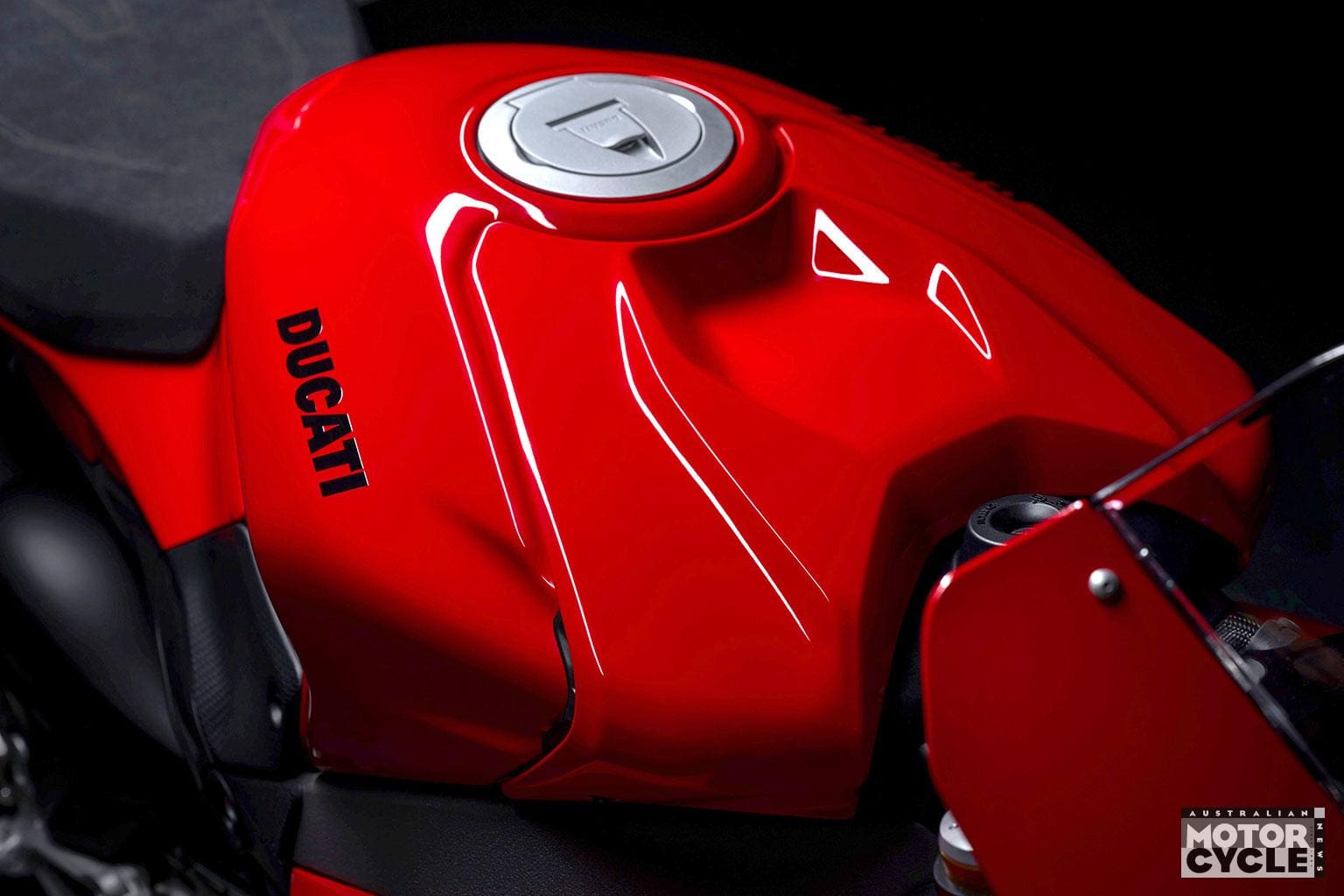
The updates
This significantly updated Panigale is lighter, more powerful and festooned with even more technical wizardry to make it clearly the most advanced road-going Ducati ever. The big talking point for many is the introduction of a double-sided swingarm, which takes over from the much-loved single-sider in a bid to manage ever-increasing levels of power and grip. It weighs 2.7kg and has 37 percent less lateral rigidity to give more rider feedback.
A redesigned ‘front frame’ has also had its lateral stiffness reduced by a comparable 40 percent, while the suspension features the very latest Smart EC 3.0 electronic TTX36 rear and NPX 25/30 front units from Öhlins.

The familiar 1103cc Desmosedici Stradale V4 engine with counter-rotating crank gets a little more power to keep the headline writers happy. All-new Brembo Hypure calipers make a first-time appearance, there’s more aerodynamic detailing and styling, which gives a certain 916-look to the silhouette, and a reconfigured riding position includes more inboard footpegs and a longer and wider seat.
The second big talking point is the new electronic package, especially the Ducati Vehicle Observer (DVO), which features an algorithm developed by the Ducati Corse MotoGP technicians that precisely estimates and optimises levels of traction control and wheelie control intervention, as well as the race eCBS combined lean-sensitive braking system, which in basic terms helps you brake like a MotoGP rider.

Ducati’s target goals for the V4 S were to improve lap times, reduce the riding effort and to allow the new model to effectively boost a rider’s skill level. With even more, smarter rider aids to grasp, as well as a raft of new electronic tech and a new chassis to test, Ducati provided AMCN with a MotoGP-style technician for the press test at the Autodromo Vallelunga racetrack near Rome.
More than ever, the Panigale’s performance is centred on its electronic set-up and, with an expert on hand, I could make changes each session and look at data (data analysis is an optional extra arriving soon), lap times and splits using the optional data logger. After each session I could give feedback to the technician, analyse lap times and change the bike’s myriad settings to hopefully make me go faster. That was the plan, anyway.

Then and now
First, some background and context. In 2022 Ducati datalogged me at the Vallelunga test of the then-new Panigale V4 S and compared my data with my performance on the previous 2021 version. I was 0.7 seconds faster on the new 2022 model with a best lap of 1m49.442s on a standard bike with slick Pirelli tyres.
This year, in private testing with eight different riders with varied skill levels, Ducati performed a similar test at the same track, pitting the current 2024 Panigale against the new 2025 model. On average, riders were 0.94 seconds faster on the new bike. It’s refreshing for a manufacturer to be this open about its test data and I was intrigued to see how the new 2025 model would stack up against my lap times from 2022. After all, very few road tests organised by manufacturers yield directly comparable facts.
But before heading out on track and pushing for lap times, I felt compelled to step back and admire the new Panigale V4 S, because no matter how much times change, a Ducati superbike must make you go weak at the knees.

My instant reaction was that Ducati has produced the most desirable Panigale yet seen. I’m old. I even remember testing the 916. Despite its cutting-edge aero, there is certainly a hint of old school in the new design. But the integrated wings look like they are sculpted and far from the bolt-on afterthoughts of yore.
I don’t think anyone who forks out $38,800 (for the base model) will tire of opening the garage door to this Italian stunner. My eye was also drawn to the double-sided swingarm, which is deliciously minimalist and clearly engineered for the subtleties of mid-corner compliance rather than brutish strength.
Throwing a leg over while on a paddock stand, I familiarised myself with the new cockpit and riding position, which in many ways feels the same – but different. The wide ’bars and switchgear are very similar, but the MotoGP-style 6.9-inch TFT dash is a big step up over the previous model, with a live G-meter, a power and torque curve display and live lean angle.
The screen is taller, the bodywork feels larger (despite being more aerodynamically efficient), and the new 50mm wider and 35mm longer seat is instantly obvious. The ’pegs have also been moved inwards 10mm to increase ground clearance.

The ride
Vallelunga might not have the glamorous image of Misano, Mugello or Imola, but it’s a good test track: fast in the first third; more technical and slower towards the end.
To start, I opted for Race B and Medium power modes with the suspension in Active Track 2, one of five road and track modes available. Race B is like a ‘safe’ track mode, with most rider aids active but designed to work with high-grip tyres.
Laps one and two were spent following test rider Alessandro Valia, getting familiar with the new bike and reacquainted with the Italian track. Even at these speeds, the 2025 Panigale felt different in the way it gave more feedback.

On lap three, Alessandro gave me the nod to open up the Panigale for the first time. Over the line in third gear into the very fast, fifth-gear T2, then into T3, still in fifth before braking for T4 and T5, taken in second gear to third. This section is rapid. I’m sure Ducati could have crammed more power into the familiar counter-rotating V4, but instead has simply given the engine one more horsepower peaking 500rpm higher.
The 120Nm of quoted peak torque is down a fraction and at 11,250rpm, up from 9500rpm previously. The two-way quickshifter is smooth and fast, and in race shift it’s just a case of keeping the throttle pinned, getting tucked in behind that taller screen, and only changing gear when the gear indicator lights illuminate on the new pin-sharp dash.
Like the old bike, it’s sense-scrambling quick and loves to rev.
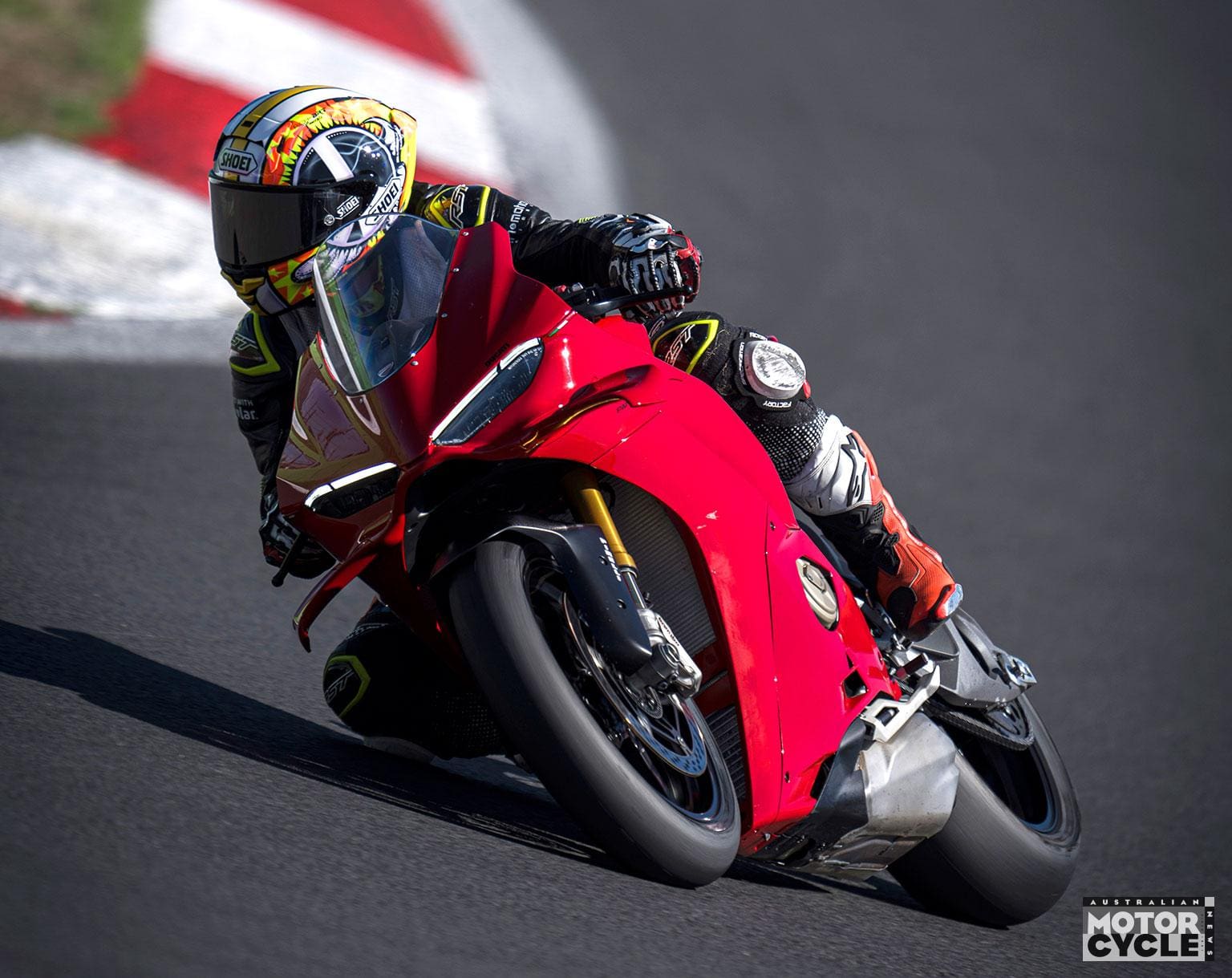
With my pace still building, the most obvious improvement over the older bike was its improved stability. The V4 S I rode in 2022 was planted enough but around Vallelunga, especially through a fourth-gear and fearsomely fast kink, would gently weave or move the ’bars to indicate you were towards the limit, forcing me to short-shift through this section.
The 2025 Panigale is much more predictable and even in the first session I had more confidence to make full use of the power. This newfound stability might be down to extra flex in the frame and longer swingarm, or the new electronics, or a combination of everything, but from lap three the difference between the old and new bike was clear.
Back in the pits and the lap times confirmed it. On lap three, I set a time of 1m49.3s, already quicker than the 2022 bike’s 1m49.4s time, and by the end of the session, 1m48.7s. I felt smoother and more stable on the new Panigale – in fast turns the bike is now so planted.
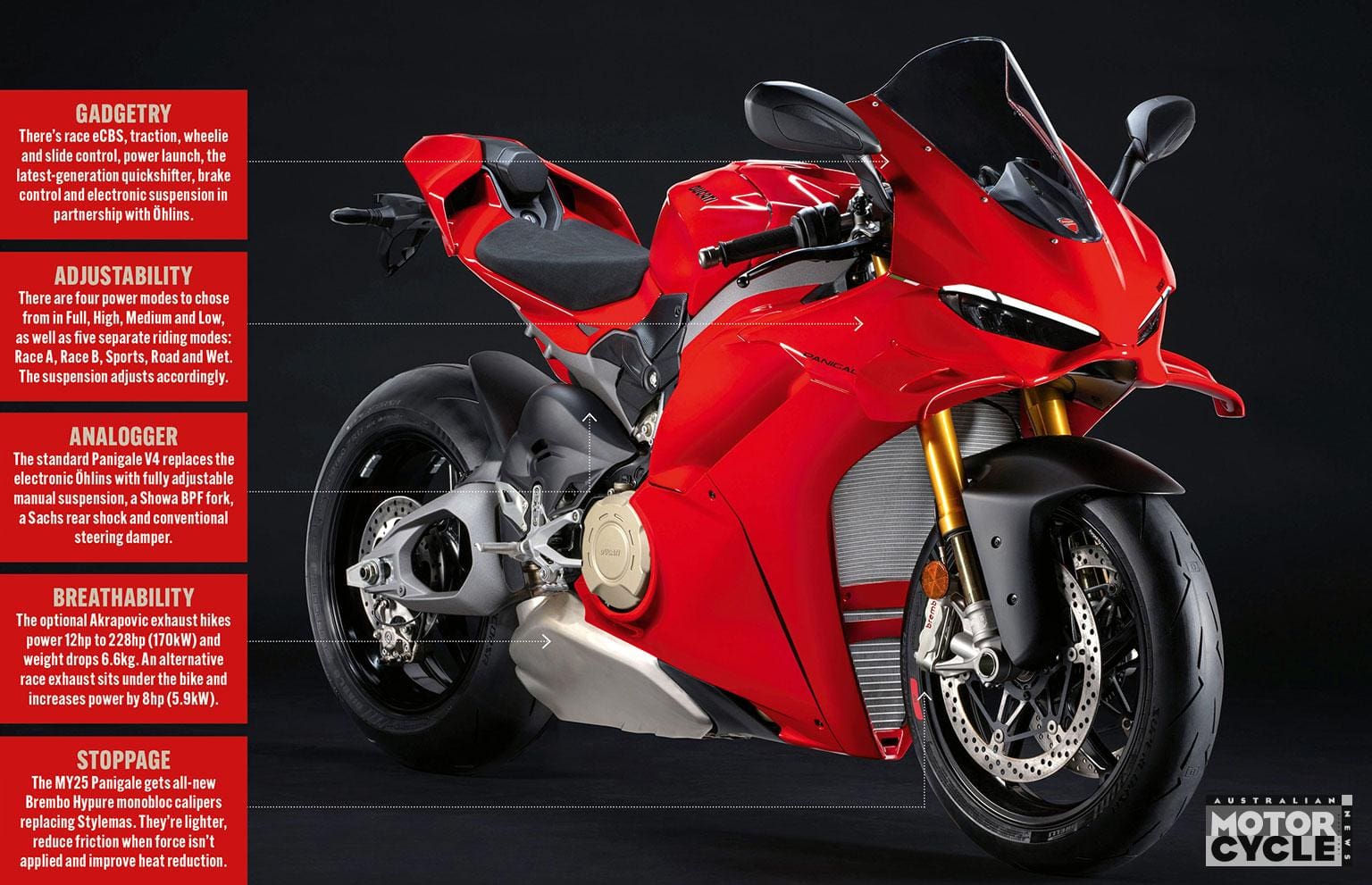
Session 2
I opted for Race A mode, with High power (but still not Full power) and Active Track 1 suspension mode, which means the Öhlins units are still active but at a higher standard setting for the track. Slide control and wheelie control are also reduced but still active, while cornering ABS stays the same.
With my brain and body recalibrated to the initially disorientating speed of the bike, I could push a little harder. The stability remained a highlight. Each lap I had more confidence to hold onto the revs, hold onto a gear for longer and make full use of the power, rather than short-shifting or being gentle with the throttle to keep some stability up my sleeve.

The same can be said for the rider aids and throttle delivery from low down. The end of a Vallelunga lap is tight and twisty with several second-gear corners and late apexes, followed by hard acceleration at a potentially perilous lean angle. But again the new rider aids take care of everything, to the point where you can be aggressive with the throttle, holding it to the stop, and simply allow the new Ducati Vehicle Observer (DVO) and rider aids to take over. The throttle connection is all but perfect when you get on the gas, then it’s just a case of winding on the power as fast as you dare and leaning on the rider aids. I don’t think I’ve ever exited a sequence of corners so hard and so early.
On occasion I could feel the torque reduce as a slide or wheelspin was corrected, especially when exiting first and second-gear corners hard on the throttle. It’s amazing what you can get away with, and that old cliche of a fast lap feeling more like a video game applies more aptly than ever. As my times came down to 1m47.56s, the dash showed tantalising live lap times and splits, keeping up to date on every metre of the track. Eyes up, son.

As mentioned, braking is managed by new Brembo Hypure calipers, and also the new Race eCBS combined ABS system. There are seven levels of ABS, with level 1 the dedicated Race eCBS. This new system combines the front and rear brakes so that even when you release the front brake and arrive at a corner apex, it continues to trail the rear brake, without any rider intervention. With DVO ensuring it won’t lock or slide the rear wheel while working out the fastest, safest braking strategy for the corner, you can, in theory at least, steer and lean to the apex. According to Ducati, a trailing rear brake tightens the line and adds stability mid-corner and, most important of all, makes you feel like Pecco Bagnaia.
The older Panigale was impressive on the brakes but the combination of the Hypure stoppers and new technology is a hugely potent package. You can take real liberties: brake so late it’s physically painful; brake so late and with so much power up to the apex it’s almost hard to comprehend and calculate. Meanwhile, the revised and more supportive shape of the petrol tank and wide ’bars allow you to prepare for and absorb the stopping power. The only weakness in the braking system I could find was the level of fitness of the test rider.
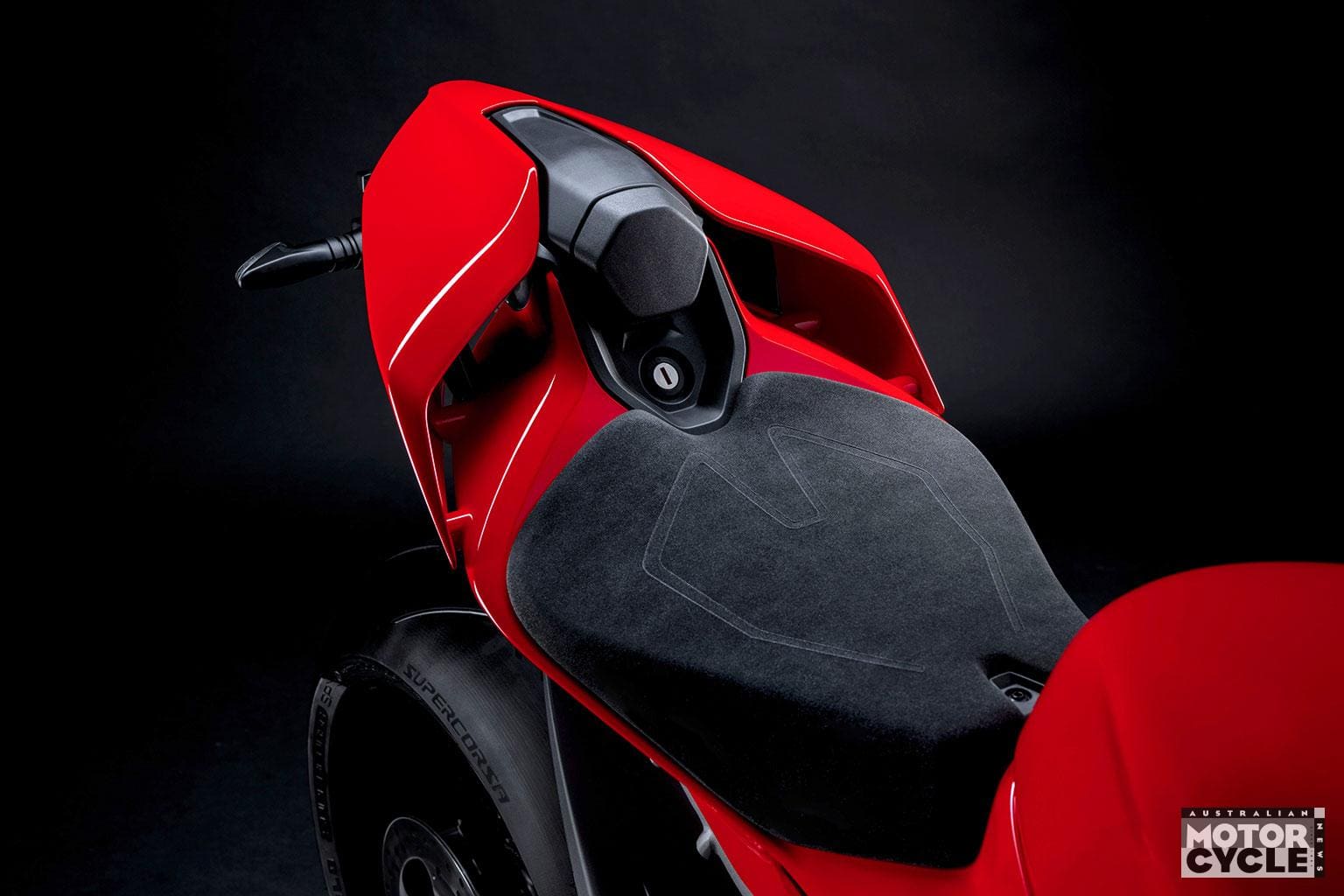
Back in the pits, the data and lap times showed that with the eCBS in its track setting, my lap time came down to 1m46.27s – over a second faster than the previous session. The data also showed how the system was adding 159.5psi of pressure on the rear brake into T8 whereas before I was only using 43.5psi – nowhere near the limit. In fact, the system was adding more brakes without me noticing and therefore reducing my stopping distance, which is as stunningly impressive as it is disconcerting.
Session 3
I became an instant convert to eCBS and now, with my engineer, started to explore the active Öhlins suspension. I had already tried the pre-programed Active Track 1 and 2 modes but now had the opportunity to try a bespoke Active Track 3, a self-created setting saved into the bike. I went up from level 3 to 4 on the front fork, and from 4 to 5 on the shock, while brake support, mid-corner, initial acceleration, acceleration and steering damper all remained the same as Active Track 1, the most track-focused setting.

With this added support, the most noticeable change was to the initial turn-in to the apex and slow-speed cornering. The steering was more accurate and I was clipping apexes with more consistency and precision, able to hold a tighter line. These seemingly small changes significantly altered the speed of the steering, Back in the pits the lap timer showed 1m46.04s, with 0.3 seconds made up in those slower corners.
With only a session to go, I was desperate to forget the lap timer for a while and simply enjoy the new Panigale and have some elbow-dragging fun, which is what the Ducati does so well. Yes, you can chase lap times, but as it’s now so much easier to ride fast you can also maintain both a pace and safety margin higher than you thought possible while still having trackday fun.
The astonishing level of grip from the chassis, rider aids and big 200/65-17 slick Pirelli rubber allows crazy lean angles. If you ever want to get your elbow down this is the bike to try it on. The new bodywork and tank shape encourage you to hang off the inside MotoGP style. No roadbike I have ridden before feels so natural or relaxed at radical lean angles. Even when I was just enjoying the quality of the V4’s ride, I was lapping consistently in the 1m46 bracket – way quicker than on the 2022 model.

The chassis feedback is forensic and as pure as mountain air. You feel in tune with the chassis, understand completely the Pirelli rubber and elevate your riding too. Sometimes electronic suspension can dilute the connection with the bike, but this is not the case with the new Panigale. Towards the end of the sessions, I couldn’t help but push for a lap and recorded a 1m45.5s without taking risks or having a moment.
Session four
For the last session of the test I opted for Full power rather than High power, which is automatically set in Race A mode. Full power is more aggressive in first and second gear, but near identical to Race A from third gear onwards, and with better precision and more fluidity, more usable than the older Panigale’s equivalent mode.
We also decided to remove the wheelie control, which made the Ducati harder and more tiring to ride but far from wheelie prone. This may be due to the longer wheelbase and new swingarm, maybe the new wings and the fact that the power is higher up in the rev range – but my lap time came down to 1m45.2s anyway. However, the lap times were less consistent and each lap was more tiring on the body.

Verdict
So what has all this intensive testing and adjustment taught us about the new Panigale V4 S?
Away from the lap times, just on feel, Ducati has made significant progress. The 2025 model is more stable and planted and therefore easier to ride. Where the older bike occasionally asked you to use calming shortshifts, particularly on the exits of fast, hanging sweepers, the new one asks for full gas and every one of its Italian horses in all the corners and does so without hesitation.
Secondly, the advancement in rider technology is truly breathtaking. Never has a Ducati superbike been this easy to ride consistently and safely. You can take outrageous liberties and rely on the rider aids, which takes a conscious reconfiguration of your riding because the new Panigale allows you to do things on a motorcycle you really shouldn’t. It flatters the rider, improves lap times and, in turn, makes riding on track more enjoyable.

Looking at lap times is a little unfair, and data separated by two years and more than a few variables can’t be treated as gospel, but in 2022 my best lap time on a Panigale V4 S was 1m49.442s and my best lap time on the same track in the same conditions on the new 2025 Panigale was 1m45.23s – which is much faster. Tyres have improved and I came to this year’s test race sharp, but I’d emphatically say the new Ducati Panigale will lap quicker than the old bike, and do so more safely and with less stress on the rider.
We don’t know what the new Panigale will be like on the road, and all this new technology comes at a price that now puts the V4 S at $49,300 (ride away), which is $5400 more than the previous model. It will be interesting when the Ducati goes up against strong competition, especially from Honda and BMW.
But if I were the competition, I’d be worried. Ducati has taken race-winning MotoGP and WorldSBK know-how and technology and transferred it to its road-going superbike so we can all feel like an elite racer. It is stunning.
PROS: This bike has the potential to make a champion out of any trackday rider.
CONS: All this tech comes at a higher price and not everyone has a technician on hand to decipher the menu.
DVO: The sixth sense
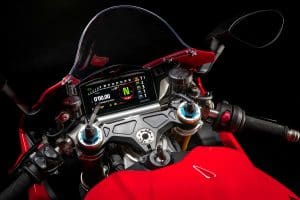
DEVELOPED BY the boffins at Ducati Corse, Ducati Vehicle Observer accumulates the input of over 70 sensors, refining and optimising the rider aids strategy, like slide control or wheelie control. Via calculations, algorithms and knowledge from years in racing, DVO can ‘estimate’ loads and ground forces – grip levels for example – while also taking actual data from the IMU. Ducati hasn’t fitted 70 actual sensors, these are simulated sensors to refine the rider aids.
Ducati has been using a similar system in MotoGP and has endless data, which can now be transferred to the roadbike. This allows the rider aids to work more efficiently, quicker and adapt better to your riding.
An example: the road-going Panigale doesn’t have a potentiometer to measure suspension, like the racebike. But when the system detects heavy or extreme braking (front brake pressure, de-acceleration, a closed throttle, etc.) it knows how the fork will react by using past data, knowledge and calculations.
Specifications
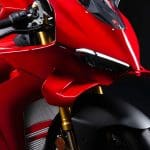
ENGINE
Capacity 1103cc
Type V4, desmodromic, four valves per cylinder
Bore & stroke 81mm x 53.5mm
Compression ratio 14.0:1
Cooling Liquid
Fueling EFI, 2 x injectors per cylinder
Transmission Six-speed
Clutch Wet, multi-plate, slipper
Final drive Chain
PERFORMANCE
Power 159kW (216hp) @ 13,500rpm (claimed)
Torque 120Nm @ 11,250rpm (claimed)
Top speed 300km/h (claimed)
Fuel consumption 6.5L/100km (claimed)
ELECTRONICS
Type Bosch
Rider aids Power Modes, Race ECBS, Ducati Vehicle Observer, Traction Control, Wheelie Control, Slide Control, Engine Brake Control, Power Launch (DPL), Electronic Suspension (DES) 3.0
Rider modes Race A, Race B, Sport, Road, Wet
CHASSIS
Frame material Aluminium
Frame type Front frame
Rake 24°
Trail 98mm
Wheelbase 1485mm
SUSPENSION
Type Öhlins
Front: NPX 25/30 S-EC 3.0 pressurised fully adjustable, electronic compression and rebound damping, 125mm travel
Rear: TTX36 monoshock, fully adjustable with electronic compression and rebound damping, 130mm travel
WHEELS & BRAKES
Wheels Forged aluminium
Front: 17 x 3.5 Rear: 17 x 6.0
Tyres Pirelli Diablo Supercorsa
Front: 120/70R17
Rear: 200/60R17
Brakes Brembo
Front: Twin 330mm discs, four-piston Hypure calipers
Rear: Single 245mm disc, twin-piston caliper
DIMENSIONS
Weight 187kg (wet, no fuel, claimed)
Seat height 850mm
Width Not given
Height Not given
Length Not given
Ground clearance Not given
Fuel capacity 17L
SERVICING & WARRANTY
Servicing 1000km
Minor: 12,000km
Major: 24,000km
Warranty Two years, unlimited km
BUSINESS END
Price $49,300 (ride away)
Colour options Ducati red
CONTACT
